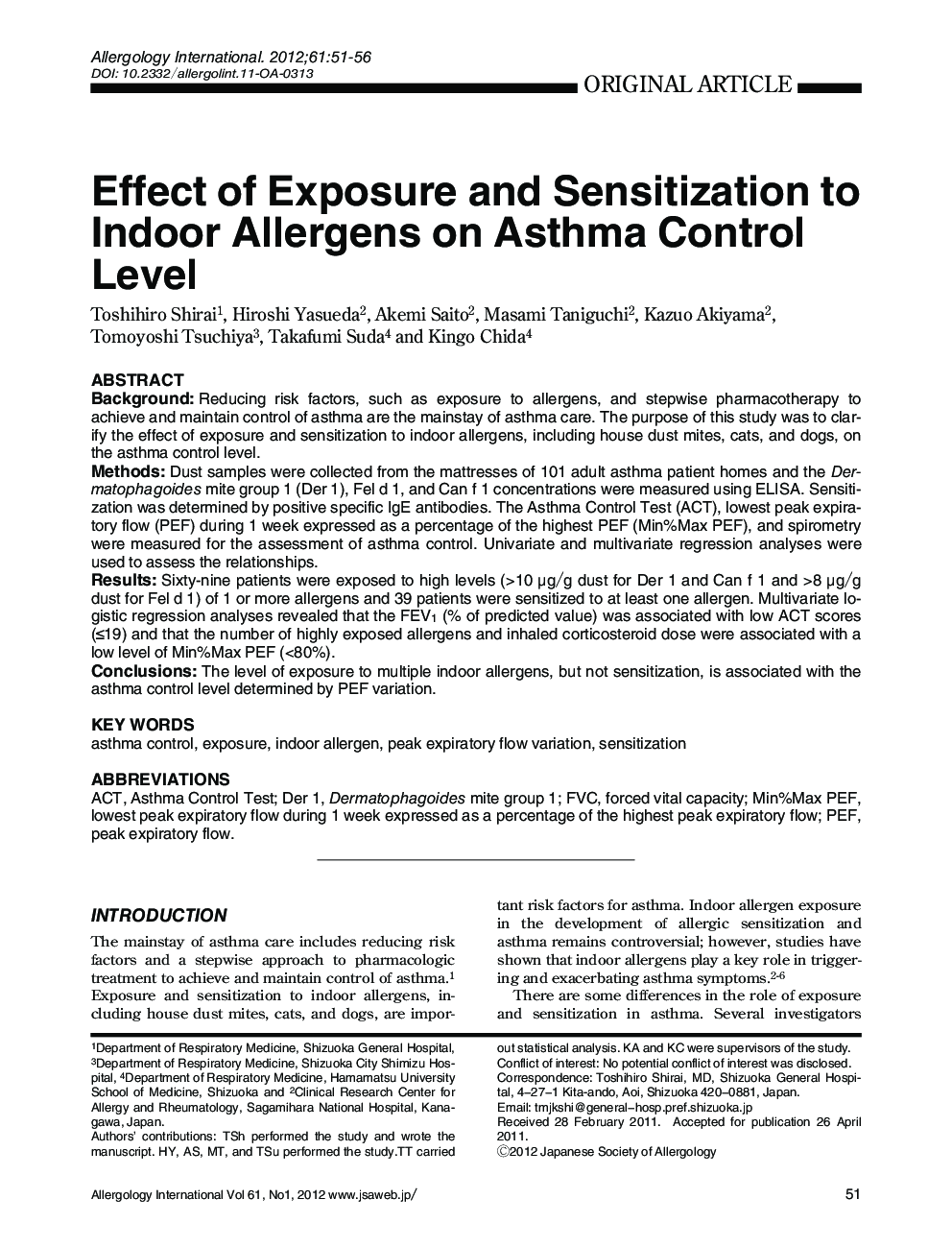| Article ID | Journal | Published Year | Pages | File Type |
|---|---|---|---|---|
| 3340795 | Allergology International | 2012 | 6 Pages |
ABSTRACTBackgroundReducing risk factors, such as exposure to allergens, and stepwise pharmacotherapy to achieve and maintain control of asthma are the mainstay of asthma care. The purpose of this study was to clarify the effect of exposure and sensitization to indoor allergens, including house dust mites, cats, and dogs, on the asthma control level.MethodsDust samples were collected from the mattresses of 101 adult asthma patient homes and the Dermatophagoides mite group 1 (Der 1), Fel d 1, and Can f 1 concentrations were measured using ELISA. Sensitization was determined by positive specific IgE antibodies. The Asthma Control Test (ACT), lowest peak expiratory flow (PEF) during 1 week expressed as a percentage of the highest PEF (Min%Max PEF), and spirometry were measured for the assessment of asthma control. Univariate and multivariate regression analyses were used to assess the relationships.ResultsSixty-nine patients were exposed to high levels (> 10 μg/g dust for Der 1 and Can f 1 and > 8 μg/g dust for Fel d 1) of 1 or more allergens and 39 patients were sensitized to at least one allergen. Multivariate logistic regression analyses revealed that the FEV1 (% of predicted value) was associated with low ACT scores (< 19) and that the number of highly exposed allergens and inhaled corticosteroid dose were associated with a low level of Min%Max PEF (< 80%).ConclusionsThe level of exposure to multiple indoor allergens, but not sensitization, is associated with the asthma control level determined by PEF variation.
